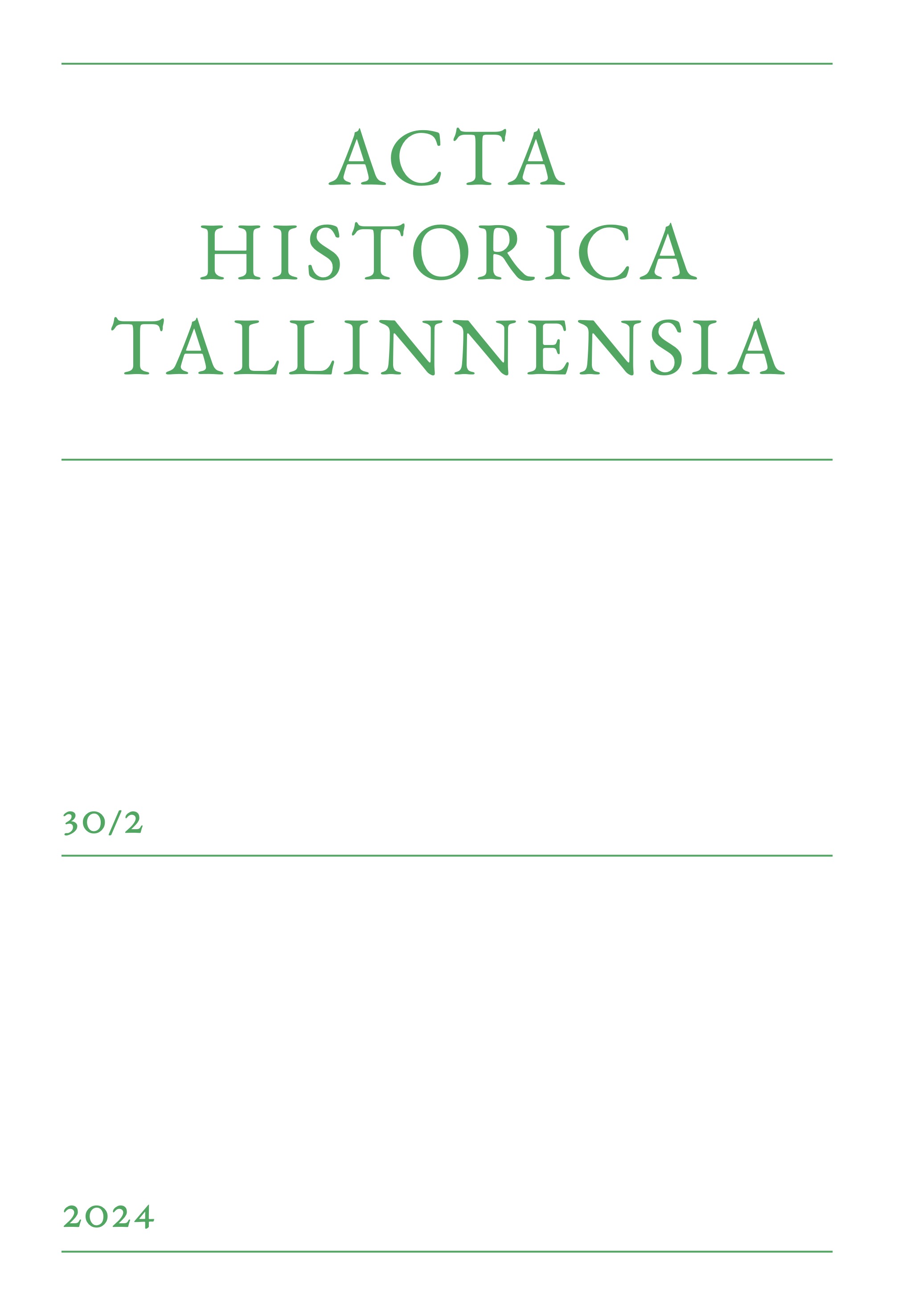„Palve hädalipp“. Palveraamatud Eesti ja Liivimaal ning David Kellneri palveraamat
“A Distress Flag of Prayer”: Prayer Books in Estonia and Livonia and David Kellner’s Prayer Book
Author(s): Tiina-Erika Friedenthal, Meelis FriedenthalSubject(s): History, Cultural history, History of ideas, Theology and Religion
Published by: Teaduste Akadeemia Kirjastus
Keywords: prayer books; devotional literature; David Kellner; Church history of Estonia and Livonia; pietism; asset lighting; spiritual poetry; religious literature;
Summary/Abstract: In 1710, during the upheaval of the Great Northern War, David Kellner (1670–1748), who was at that time serving as a quartermaster in the Swedish army, published a rhymed prayer book titled The Distress Flag of Prayer, Raised to Call for the Most High’s Aid in the Stormy Weather of Many Tribulations (Die Noth-Fahne des Gebets, um Hilfe des Allerhöchsten im Sturmwetter vieler Trübsal ausgestreckt). This work is a notable artefact in the religious and cultural history of Estonia and Livonia, reflecting both personal hardship and broader spiritual trends of the early 18th century. Kellner, who is better known today as a composer and music theorist, endured severe hardships during this period. Born near Leipzig, he moved to Tartu, Estonia (then part of Sweden’s Baltic provinces), where he studied and married. By 1710, after suffering personal and financial losses due to the war, Kellner found himself destitute in Stockholm. In response to these adversities, he published his prayer book as a spiritual guide amid the intense hardships of the time. This publication exemplifies the surge in devotional literature during the late 17th and early 18th centuries, a time when prayer books and edifying writings reached a peak in popularity – constituting up to 39% of the publications offered at events like the 1740 Leipzig book fair. These works served both communal church use and private devotion, providing guidance, comfort, and spiritual affirmation. Initially, the Protestant tradition, following Martin Luther’s preference for the Bible, catechism, and hymns, resisted the proliferation of prayer books. However, over two centuries, influential figures such as Johann Habermann, with his Christliche Gebet (1567), and later Johann Arndt and Johann Gerhard, helped shape and expand this genre. Habermann’s work, reprinted 59 times by the end of the 16th century, introduced structured daily prayers influenced by Catholic, particularly Jesuit, traditions. In Estonia and Livonia, local interest in prayer books was reflected in works like Georg Ciegler’s 1595 Schönes neues andächtiges Gebetbüchlein, which compiled prayers from St. Augustine and Bernard of Clairvaux to encourage genuine penitence and to address misunderstandings, such as the belief that people need not repent and could approach communion with a “cold heart.” Similarly, Jodocus Holste’s 1596 exposition on Luther’s prayers aimed to refute Catholic accusations that Lutherans lacked devotional practices. The incorporation of verse into prayers became prominent in the 17th century. Ludwig Dunte’s 1638 Spruch und Gebetbüchlein featured rhymed prayers for schoolchildren, reflecting both the era’s enthusiasm for vernacular German poetry and the belief in the spiritual efficacy of verse – a practice that Kellner would later embrace. At the same time, Heinrich Stahl’s Estonian-German handbook (1632–1638) included prose-based prayers intended to teach Estonian-speaking peasants, who were often uneducated, how to pray, acknowledging their struggles in articulating personal supplications. The rise of Pietism and early Enlightenment thought further influenced prayer literature, emphasizing personal piety and inner spirituality, and advocating a return to Lutheran ideals away from fixed expressions of prayer. Pietists valued heartfelt, spontaneous prayer over recitations but also produced prayer books to guide the less experienced. Johann Fischer, a notable Pietist in Livonia, published Arndt’s works and influenced the 1679 Riga prayer book, which advised against rigid formulas in favour of sincere personal expression. Kellner’s prayer book aligns with the period’s focus on introspective and personal spirituality. Unlike earlier compilations that were often impersonal, his prayers are deeply rooted in his own experiences of personal adversities – loss, injustice, and spiritual turmoil. For example, his prayer “Conversations Between Jesus and One Wrongfully Defamed” reveals a struggle with anger and a yearning for reconciliation, mirroring his own legal and social troubles. This personal focus reflects the individual spiritual experience emphasized by both Pietists and early Enlightenment thinkers. Furthermore, Kellner’s work places him within a broader literary trend in which laypersons began contributing to religious literature, a field previously dominated by clergy and academics. His writings echo those of contemporaries like Melchior Fuchs, Riga’s mayor, who in 1675 published Sonntägliche und feiertägliche Betrachtungen, Gebete und Danksagungen, and Catharina von Gyllenstierna, whose 1677 Geistliches Heil-Pflaster drew from her personal sufferings to offer spiritual remedies. In conclusion, David Kellner’s 1710 prayer book serves as a lens into the religious and cultural milieu of early 18th-century Estonia and Livonia. It bridges traditional Lutheran theology with emerging personal and emotional expressions of faith characteristic of the Pietist movement and early Enlightenment influences. Kellner’s work not only reflects his personal journey but also encapsulates the shifting dynamics of devotional literature, marking an important transition in the spirituality of the Protestant tradition at the beginning of the 18th century.
Journal: Acta Historica Tallinnensia
- Issue Year: 30/2024
- Issue No: 2
- Page Range: 179-211
- Page Count: 33
- Language: Estonian

